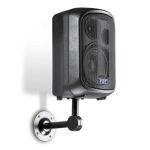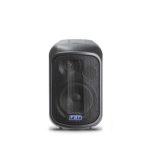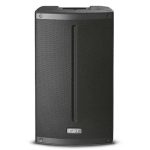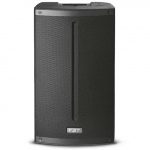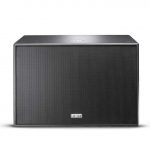Who Pays Freight When Shipping from a FOB Shipping Point? Helping Businesses Ship Smarter
For instance, DDP may not be the best choice when importing expensive goods like electronics or jewelry because of the significant customs charges that must be paid at the border. For example, in FOB shipping point, the buyer is responsible for freight, insurance, and other costs from the shipping point onward. If you’re ordering many products from a single seller, you may have more leverage to negotiate FOB destination terms, as the cost of shipping per unit will likely be lower for the seller. DAP, or “delivered-at-place,” says a seller agrees to be responsible for transporting goods to a location stated in the sales contract. Under CPT, or “carriage paid to,” the seller pays for delivery of goods to a carrier or nominated location and assumes risks until the carrier takes possession.
Understanding FOB is crucial for small businesses as it affects who is responsible for the goods at different stages of the shipping journey. To harness the advantages of FOB, one must engage in meticulous negotiation and take into account the distinct needs and preferences of both parties participating in the global trade transaction. Shipping via FOB Incoterms from China is simple, straightforward, and the ideal way to ensure your products leave China safely and arrive at your destination seamlessly.
- FOB transfers ownership at the loading point onto the carrier at the seller’s location, with the buyer taking responsibility for shipping.
- When not shipping via sea, buyers and sellers could consider FCA as a comparative Incoterm which works for all modes of transport.
- Typically, in an FOB Shipping Point agreement, the buyer is responsible for all freight charges.
- For the buyer, FOB Destination means that the goods are not recorded as inventory until they are received at the buyer’s location.
- The buyer is responsible for paying freight costs from the port of shipment to the destination.
FOB vs CIF
With FCE Logistics, you get a streamlined, efficient, and transparent shipping experience. So, whether you’re a buyer or a seller, you can rest assured that you’re making the most out of your shipping investments. Both parties must fulfill their obligations, mitigate risks, and maintain a positive and trustworthy business relationship to ensure clarity, transparency, and legal compliance in FOB agreements. This guide intends to simplify the complexities of FOB, serving as a helpful resource for importers and exporters alike. From its basic meanings to the subtle differences between FOB Origin and FOB Destination, let’s explore the core principles that underpin this international trade term.
Incoterms®, short for International Commercial Terms, are rules set by the International Chamber of Commerce (ICC) to define the responsibilities of buyers and sellers in international trade. These terms specify which party is responsible for tasks and costs relating to International shipping, insurance, customs clearance and duties & taxes. This acronym is important to know because it defines specific responsibilities between buyers and sellers in a shipping agreement.
For small products that will inevitably be shipped by air, or small suppliers with little experience working with international buyers, you may receive quotations in EXW Incoterms. However, the vast majority of the quotes you will receive from sellers in China will be under FOB Incoterms. If you look at a quotation, you will usually see the unit price, FOB as the Incoterm, and a Chinese city, the shipping point. It is essential to have a clear contract that outlines the responsibilities and obligations of both parties to prevent legal disputes. For the buyer, FOB Destination means that the goods are not recorded as inventory until they are received at the buyer’s location.
FOB Destination Agreement Terms and Variations
One of the primary risks is that the seller retains liability for the goods until they are delivered to the buyer’s destination. This means that any damage or loss during transit falls squarely on the seller’s shoulders, potentially leading to significant financial losses. The shipper will generally register a sale as soon as cargo leaves its shipping pier, irrespective of the delivery conditions. Thus, the true significance of FOB destination conditions is the issue of who pays for the freight. Since the seller retains ownership of the items throughout the transportation damage period, the seller should file any claims with the insurance company. Customer-arranged pickup, in which the buyer arranges to have the goods picked up from the seller’s location and assumes responsibility for them at that time, may replace any FOB conditions.
- This can raise questions about their ability to meet delivery deadlines and is a significant risk for FOB Destination transactions.
- FOB and CIF are completely different Incoterms® used throughout the supply chain.
- In modern domestic shipping, the term is used to describe the time when the seller is no longer responsible for the shipped goods and when the buyer is responsible for paying the transport costs.
As a result, shippers need to understand this term, how it impacts responsibilities and obligations when transporting goods and who is on the proverbial hook. The buyer is responsible for paying freight costs from the port of shipment to the destination. FOB pricing refers to the total cost of goods, including the product price, packaging, and inland transportation to the port. This pricing structure makes it clear when ownership and responsibility for the goods shift from the seller to the buyer. Understanding freight on board or free on board (FOB) is essential for importers and exporters in the complex world of global trade.
FOB status says who will take responsibility for a shipment from its port of origin to its destination port. It indicates the point at which the title of the goods transfers from the seller to the buyer, and therefore who needs to cover the costs of transit and deal with any issues. The term “freight on board” originated from the days of sailing ships when goods were “passed over the rail by hand,” as defined in Incoterm.
common misunderstandings about FOB shipping
This can affect the seller’s competitiveness in the market, as buyers may opt for lower-priced alternatives. When the shipment has been received on board, the carrier of the goods will issue a ‘Bill of Lading’ document (B/L, or BoL) stating if the shipment is on ‘Freight Collect’ or ‘Freight Pre-Paid’ terms. These terms relate to which party will be paying for the International Freight costs.
When you agree to receive items under FOB shipping point terms, it’s essential to be aware of your liabilities. CIP stands for “carriage and insurance paid to” says that the seller pays for delivery and insurance of goods to a carrier or nominated location. Beyond those costs, FOB terms also affect how and when a business will account for goods in its inventory.
For FOB Origin, the buyer assumes all risks related to damage, destruction, and loss during transit once the goods are loaded onto the chosen mode of transport at the origin point. This arrangement can be more expensive for the buyer, particularly if the shipment is large or travels a long distance. Resolving any issues that arise during transportation can also be time-consuming for the buyer. Understand its components, seller and buyer roles, export process, benefits, and how it compares with other Incoterms.
It aggregates data from various sources to offer insights into shipment statuses, locations, and potential delays. Covers advantages like cost predictability, reduced buyer risk, and seller control. FOB stands for Free on Board, and it is used primarily for sea and fob who pays freight inland waterway transport.
What happens if goods are damaged in CIF shipping?
Since Dara Inc. has experience managing international shipping or wants to save on transport costs, FOB Origin, they decided to go forward this way. However, if the seller wants to minimize risk and offer a complete service (including delivery), FOB Destination would be a better option. In the realm of international trade and logistics, understanding key concepts like FOB (Free on Board) and Freight Visibility Portals is crucial.
FCA (or Free Carrier) can be used for any mode of transport, including air, sea, road, and rail. With FCE Logistics, you’re not just shipping goods; you’re making global connections. Our extensive network ensures that whether you’re the buyer or the seller, you know exactly when and where your cargo will be, and who is responsible for it at each stage. FOB stands for “Free On Board” or “Freight On Board.” This term is used to indicate when liability and ownership of goods is transferred from a seller to a buyer.
Freight shipping how-to
For example, according to the International Air Transport Association (IATA), air freight costs can be up to 5 times higher than sea freight. When products are received at the buyer’s location, ownership passes from the seller to the buyer. The seller maintains ownership of the goods–and responsibility for replacing damaged or missing items–under the FOB destination agreement until goods arrive at their destination. Understanding the shipping process is crucial as it highlights the stages and responsibilities involved in transferring goods from seller to buyer, ensuring efficiency and risk management.
Whether it’s FOB Origin or FOB Destination, understanding these terms can save you both time and resources, much like our LCL services. An international trade partnership utilized FOB Shipping Point for shipments from China to the United States. By negotiating bulk shipping rates and consolidating shipments, both parties achieved significant cost savings. Effective communication and clear contractual terms ensured a smooth transaction, demonstrating the benefits of strategic negotiation and planning.
